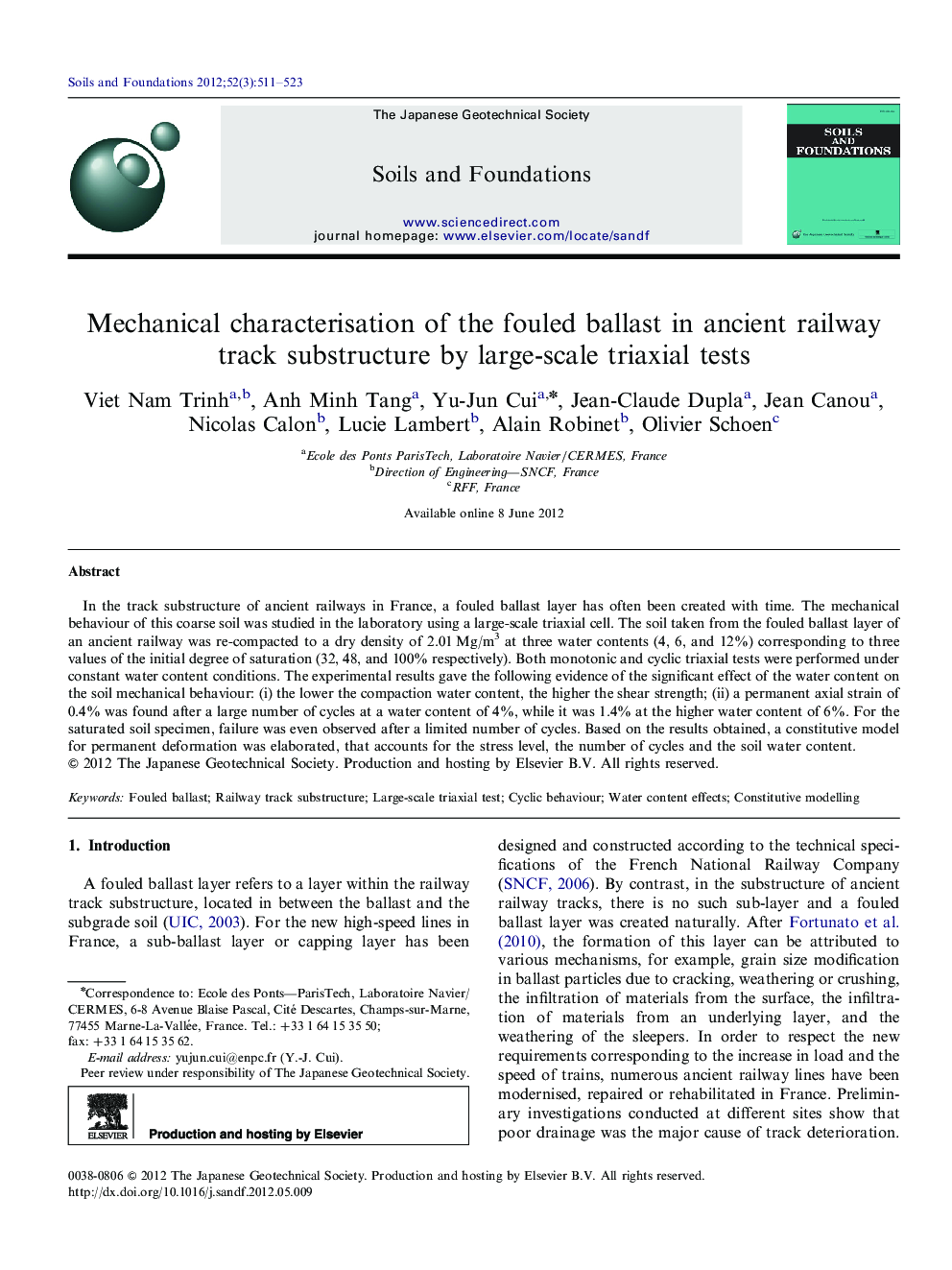| Article ID | Journal | Published Year | Pages | File Type |
|---|---|---|---|---|
| 307345 | Soils and Foundations | 2012 | 13 Pages |
In the track substructure of ancient railways in France, a fouled ballast layer has often been created with time. The mechanical behaviour of this coarse soil was studied in the laboratory using a large-scale triaxial cell. The soil taken from the fouled ballast layer of an ancient railway was re-compacted to a dry density of 2.01 Mg/m3 at three water contents (4, 6, and 12%) corresponding to three values of the initial degree of saturation (32, 48, and 100% respectively). Both monotonic and cyclic triaxial tests were performed under constant water content conditions. The experimental results gave the following evidence of the significant effect of the water content on the soil mechanical behaviour: (i) the lower the compaction water content, the higher the shear strength; (ii) a permanent axial strain of 0.4% was found after a large number of cycles at a water content of 4%, while it was 1.4% at the higher water content of 6%. For the saturated soil specimen, failure was even observed after a limited number of cycles. Based on the results obtained, a constitutive model for permanent deformation was elaborated, that accounts for the stress level, the number of cycles and the soil water content.
